Kenya AA Coffee Variety Features Kenya coffee beans Hand brewed Flavor Taste Description
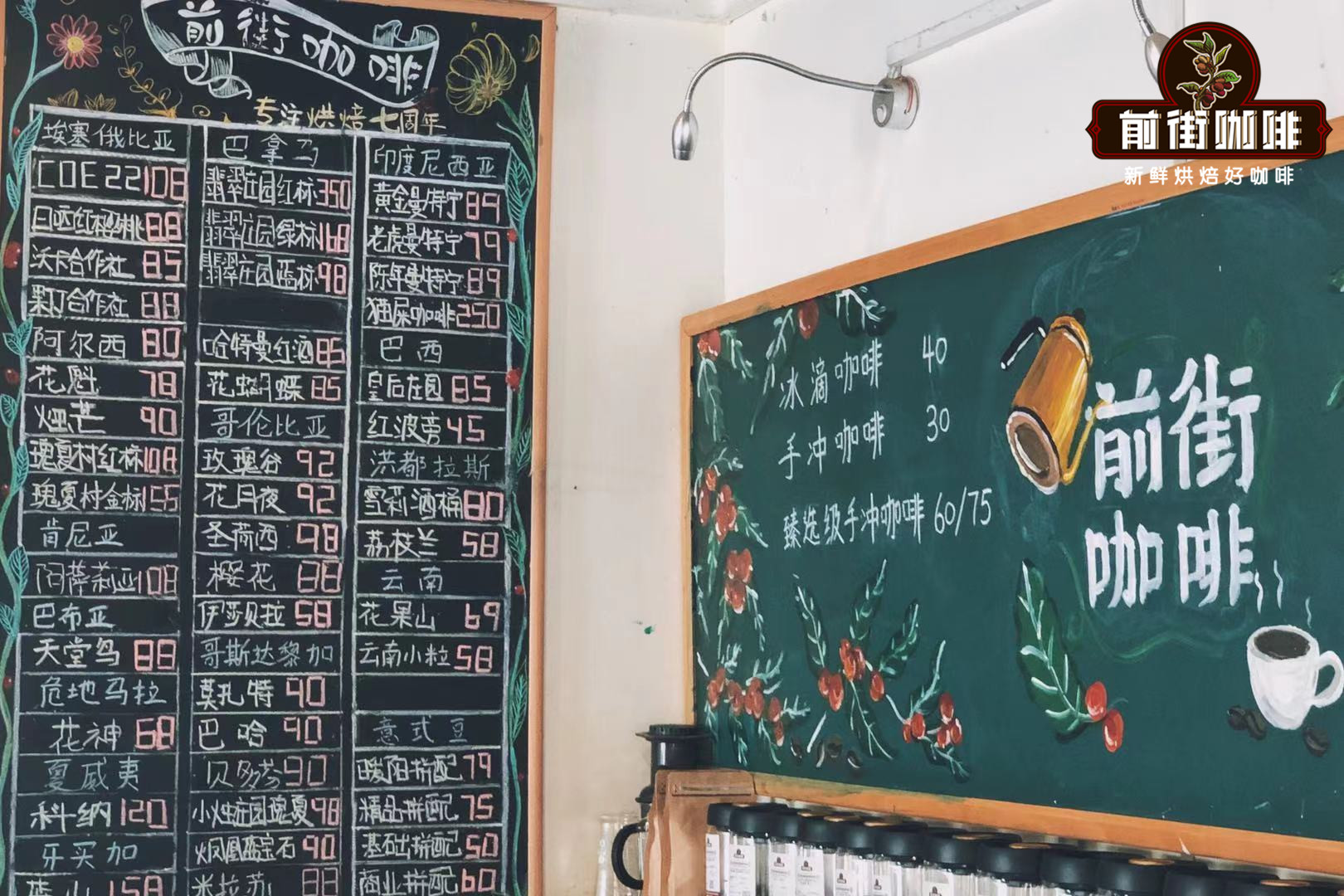
Professional coffee knowledge exchange more coffee bean information please follow the coffee workshop (Wechat official account cafe_style)
Kenyan coffee beans have wonderful and satisfying aromas, well-balanced acidity, well-proportioned granules and excellent fruit flavors. Qianjie compared the coffee beans of Kenya's neighboring Ethiopia, and found that although both are mainly sour, the feeling is completely different. The acid in Kenya is strong and thick, and the acid in Ethiopia is soft and bright. If you try African coffee beans for the first time, Qianjie suggests that you can try Ethiopian coffee beans first, and then slowly transition to Kenyan coffee beans.
In fact, when it comes to the topic of coffee for the first time, many people will ask Qianjie how to choose coffee beans. Qianjie, whether it is a store in Guangzhou or online Taobao, has a series of rations of coffee beans, including Esseyega, Brazilian red fruit, Colombian Huilan, Indonesia Manning, Costa Rica Tara beads, Guatemala micro south fruit and Yunnan small grain coffee seven kinds, covering the major coffee producing areas.
When Qianjie chooses to put on a "rations bean", it will select the beans that represent the original local flavor in each major producing area. In the packaging, we introduced them with a fresh price of 100g. The significance of Qianjie food beans is that people can use low prices to identify the basic flavors of major producing areas, such as Yega's citric acid, Mantenin's herbal flavor, and Brazil's Colombian nut chocolate flavor.
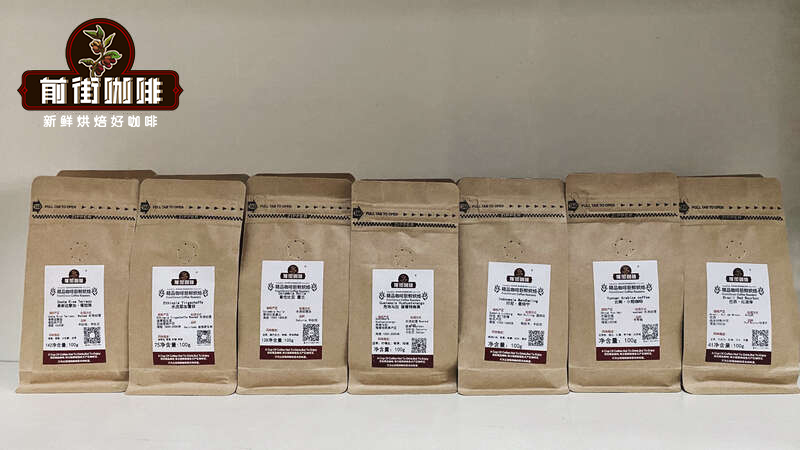
The development of coffee in Kenya
Kenya is located in East Africa, bordering Ethiopia. The history of coffee in Kenya is not as old as that of Ethiopia, and coffee was not introduced until the 20th century. When coffee was first introduced to Kenya, Kenya was a British colonial country. In order to earn foreign exchange, the British colonial government widely promoted the cultivation of coffee in Kenya and shipped it to London for export after the beans were harvested. In 1922, Kenya established the Scott Agricultural Laboratory (hence the name Scott Labs,SL28 SL34) to engage in coffee cultivation research. In the more than 10 years since its establishment, they selected SL28 and SL34 from 42 coffee varieties suitable for growing areas, providing a very good start for the development of the coffee industry. Today, these two varieties occupy 90% of the acreage in Kenya. The Kenyan government attaches great importance to coffee sales. In 1931, the Kenyan growers' Cooperation Alliance and the Kenyan National Coffee Council were established to guide the development of the coffee industry at the private and national levels. In 1937, the Nairobi Coffee Exchange was established and the auction system of Kenyan coffee began. Good coffee has a good price, which sets the tone for the price of coffee. In 1938, the Kenyan government issued a coffee grading system, also known as AA, AB and PB, which began to provide a basis for the quality of Kenyan coffee.
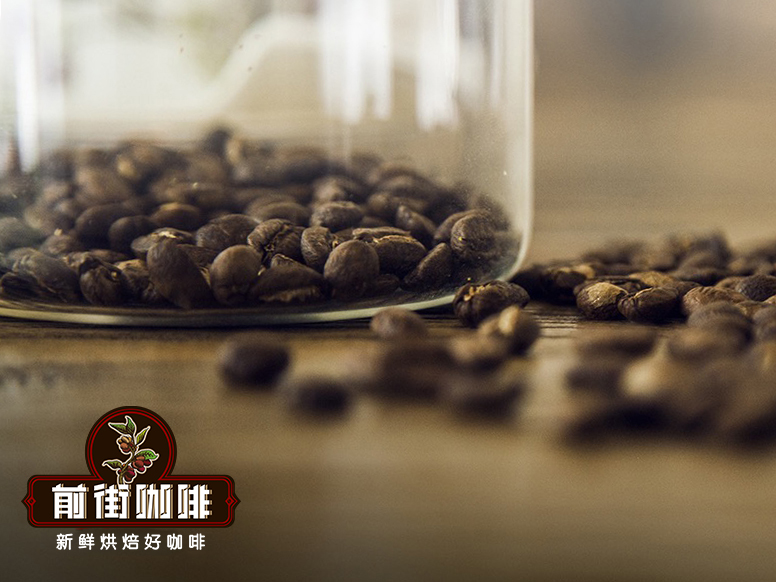
Kenyan coffee is grown mostly in the fertile, loose, acidic volcanic red soil of the highlands north and east of Nairobi. There is plenty of light and good drainage, and the elevation is between 1400 and 2000 meters. Because the higher the altitude, the greater the temperature difference between day and night, the ripening cycle of Kenyan coffee is longer than that of low altitude, so it has higher density and rich flavor. Kenyan coffee usually blossoms after rain and occurs in March and April. Coffee cherries ripen from May to July and then mature again in September and October, yielding two crops a year.
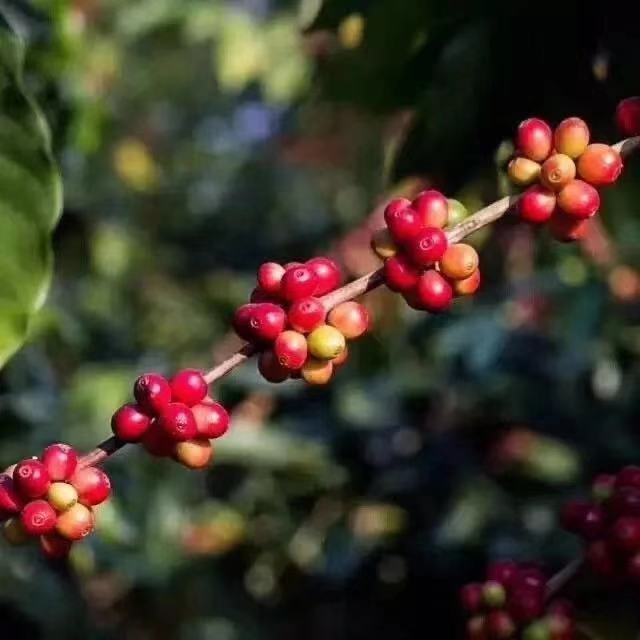
Kenyan coffee producing area
Kenya's coffee producing areas are mainly distributed in the central and western parts of the country. The main coffee producing areas in central Kenya are Kiambu, Nyeri, Kirinyaga, Muranga, Embu, Machakos, Ruiri, Thika, Kisii and Mt in the west. Bungoma district of Elgon).
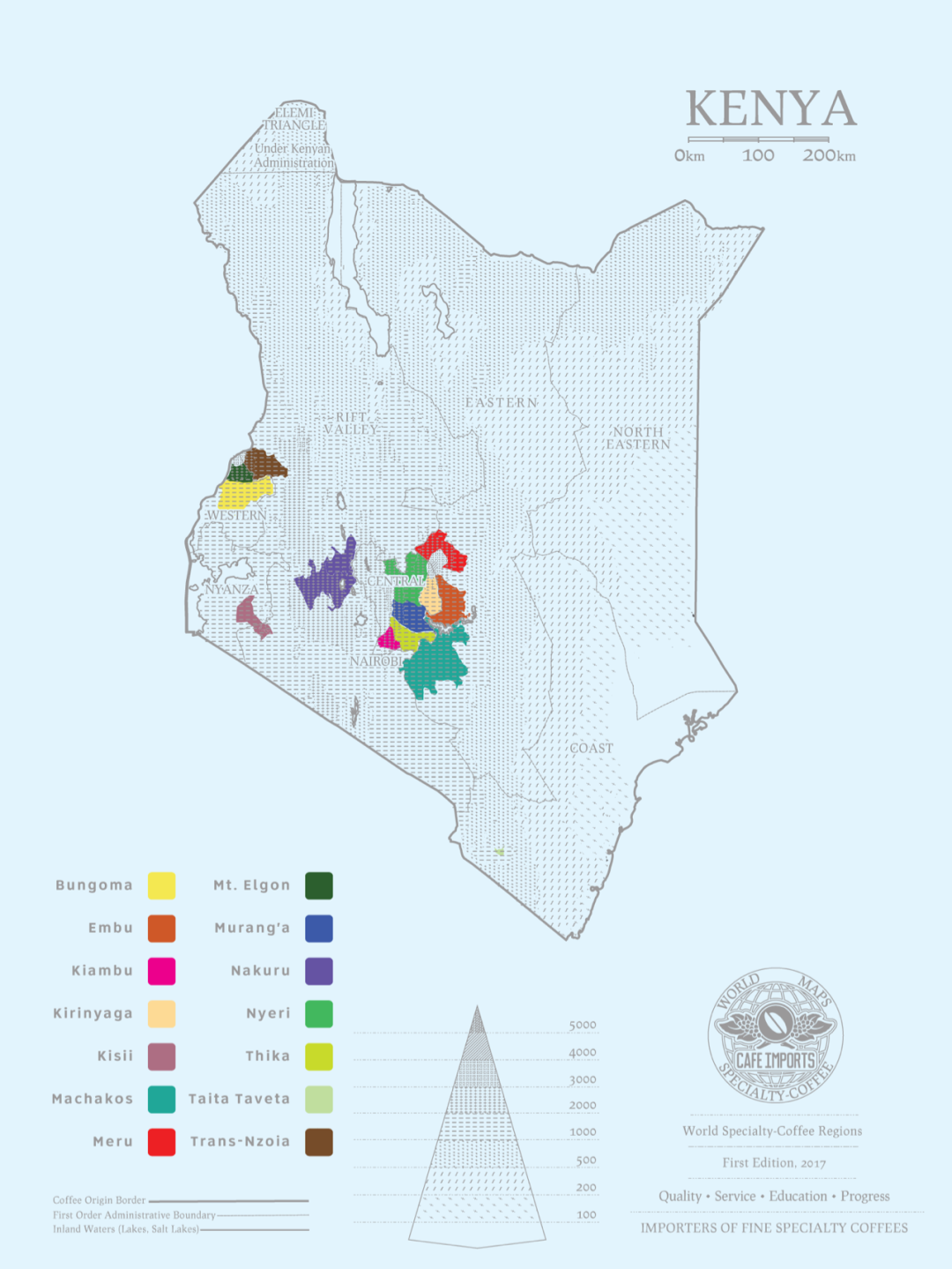
Qianjie Coffee updates the coffee producing areas on the bean list every once in a while, and Kenya is no exception. Last month, Qianjie Coffee collected a batch of Kenyan coffee beans from different coffee producing areas. Through roasting, cup testing, hand brewing and other links, it can be found that each producing area has its own different characteristics.
Kiambu and Muranga are relatively bright and thick in acid biaoxianshang performance.
Nyeri, on the other hand, has bright citrus and floral aromas, which are slightly inferior to those of Ethiopia's Yegashafi, but with the thick acidity of berries.
The acidity of Kirinyaga also tends to be bright and thick, with a delicate sweetness.
The acid quality of Embu is not as thick and strong as the previous producing areas, and the flavor tends to be balanced and lasting.
Machakos is also outstanding in terms of acidity, with a delicate and long-lasting taste, which is gradually concerned by coffee buyers.
The biggest difference between Kisii and Bungoma and other producing areas is that the fruit is sweet, soft sour and nutty.
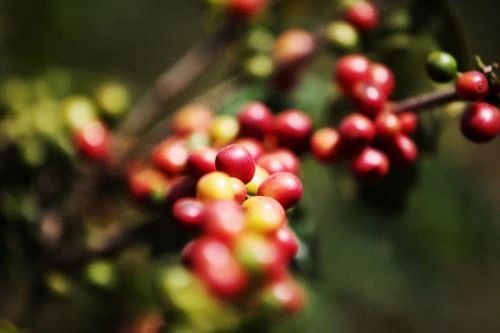
Kenya coffee growing model
Kenya coffee is made up of two main plantations: large plantations and more than 3000 large farms, which account for about 25% of Kenya's coffee growing land. Another 75 per cent are agricultural cooperatives, totalling 270 cooperatives comprising a total of 700,000 smallholder farmers.
In the 1960s, smallholder cooperatives began to develop and construct shared processing plants, enabling them to harvest coffee like large plantations. Front Street Coffee believes that this model can make coffee farmers focus on coffee cultivation and production. For example, Ethiopia's main coffee cultivation model is also smallholder cooperatives. A batch of coffee beans collected by Yega Shefi Konga Cooperative some time ago by Front Street Coffee has excellent flavor.
Kenyan coffee varieties
In Kenya, the common varieties of coffee are SL28, SL34 and Ruiru11.
In 1922, the Scott Agricultural Laboratory (Scott Labs) was established in Kenya to engage in coffee cultivation research. More than 10 years after its establishment, the laboratory selected SL28 and SL34 from 42 kinds of coffee, which provided a good start for the development of coffee industry. SL28 and SL34 are selected varieties after many times of cultivation. SL28 belongs to the bourbon gene group, with the original bourbon bright tonality and rich acid. The lineage of SL34 is closer to the gene of iron pickup, and its acid quality is milder than that of SL28. SL28 and SL34 currently account for 90% of Kenya's production, and South America is also actively introducing SL28 as a planting variety.
The birth of Ruiru11 is due to the global outbreak of rust. At that time, many Arabica species suffered from diseases. In order not to reduce the yield of coffee, a hybrid variety Ruiru11 was developed, which had excellent disease resistance, but its flavor quality was far inferior to that of SL28 and SL34.
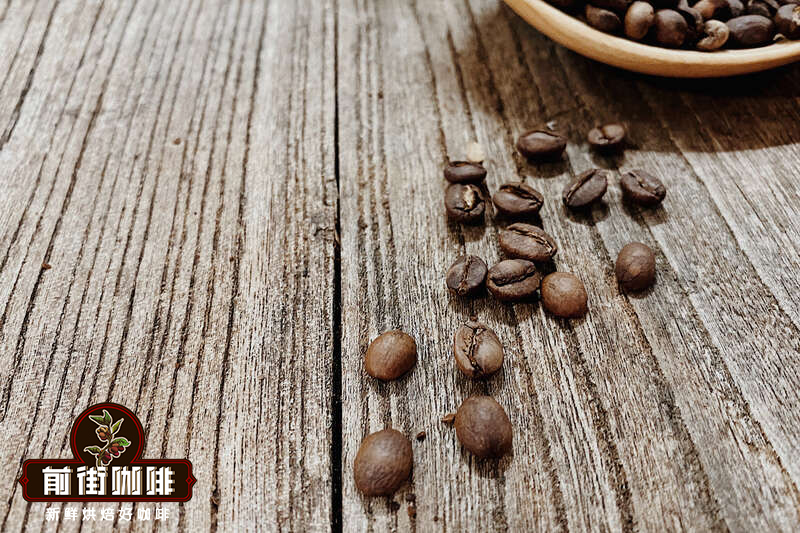
Kenyan coffee grading system
Kenya is graded according to the particle size and cup test results of coffee beans. According to the size, shape and hardness of coffee beans, E, AA or AA+, AB, C, PB, TT, T from high to low.
E (elephant bean): the "E" here stands for Elephant, that is, "elephant", but it is not the elephant bean in the coffee bean variety (Maragogype). It is a kind of bean whose two seeds are intertwined with each other because of abnormal development, forming a "seemingly one" bean, which can be regarded as a flaw. Generally speaking, there are two seeds in a fruit, affixed face to face, so there will be a flat side, called flat beans, mother beans. E-grade beans are beans in which two seeds stick together in the process of growth and become super-large. The size of E-grade bean particles is more than 18 mesh (1 mesh is 1 to 64 inches), and the number is rare.
AA: the size of this grade is about 17018 items (about 6.7~7.1mm), which is the Kenyan coffee grade that most people often hear. In boutique coffee, this grade is usually called AA TOP, and it is also a bean that most coffee shops will sell. But AA does not represent the best, it is just that the size of beans should not be confused with flavor.
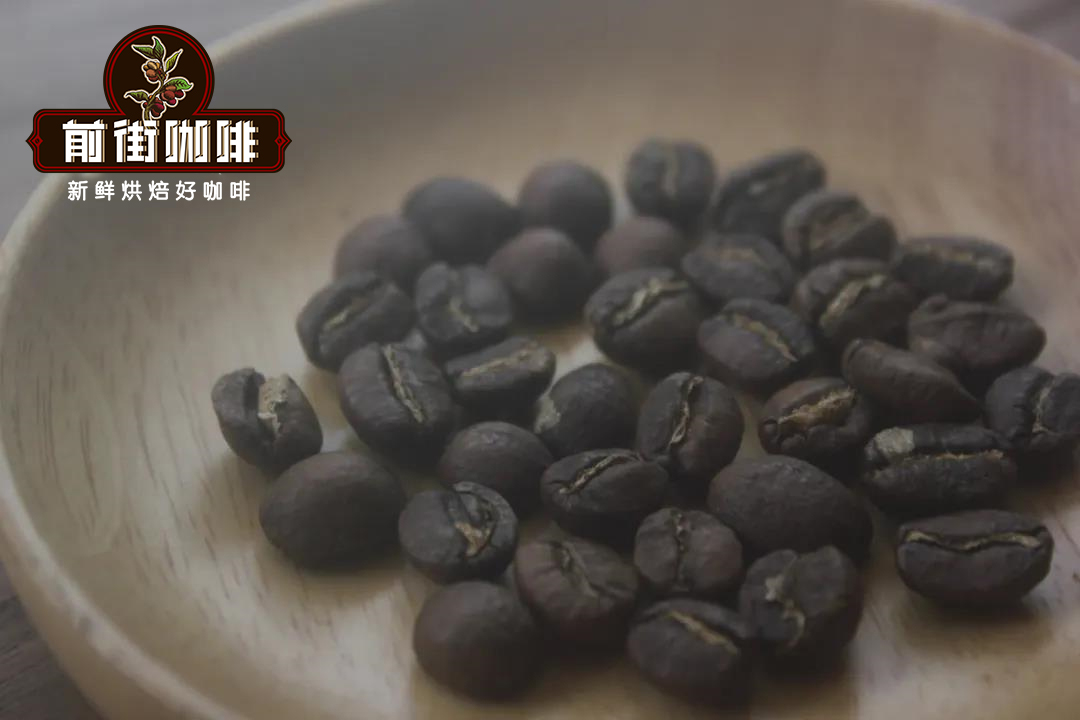
Front Street Coffee Kenya Sasini Coffee Bean AA Grade
AB: Most coffee beans are in this classification, the reason why AB is mainly because the size of A is 6.80 mm, B is 6.20 mm, and these two sizes of coffee beans (A and B) will be mixed together, so it is called AB, the size is about 15~16 mesh (about 6.0~6.4mm). Front Street Coffee Kenya Asalia Coffee Bean AA TOP Grade
C: The particle size is about 14~15 mesh (about 5.6~6.0mm), which is smaller than Class B.
PB: Peaberry, also known as small round beans, can also be called male beans. Compared to ordinary flat beans, this is also rare, accounting for about 10% of all coffee beans, mainly because only one seed in the fruit is fully developed, resulting in a small and round bean. Some people will love PB flavor, so PB will be singled out for sale.
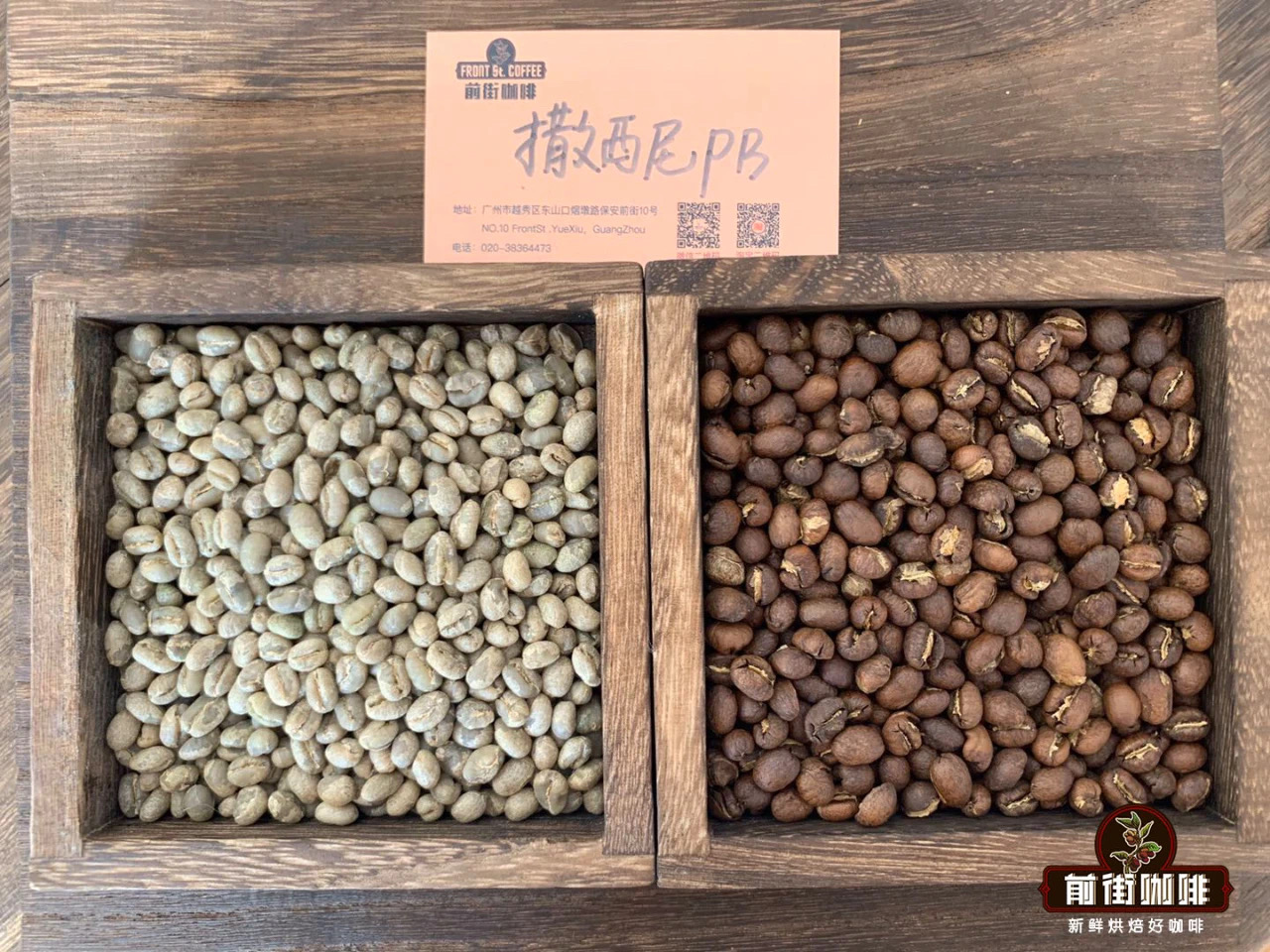
Front Street Coffee Kenya Sassini Coffee beans PB Grade
TT: these coffee beans are light beans selected from AA and AB beans by air sorter. They are usually light in weight and substandard in hardness, as well as broken and defective beans.
T: lighter beans, broken beans, and even broken fragments of beans selected from C-grade beans.
There is also a level of MH/ML: this type of coffee beans will not be exported, usually overcooked and dropped on the ground, the quality of coffee beans is poor, accounting for about 7% of all coffee beans, only for the Kenyan domestic market.
For the raw coffee beans of AA grade and AB grade, the special classification of cup test results (not officially recognized by Kenyan countries, made by exporters) is added, and the order from high to low is TOP, PLUS (+) and FAQ. The Kenyan Asalia flavor level on the front street coffee bean list has reached the TOP level, but as mentioned earlier, this is not an official grading system, and not every coffee bean collected in front street coffee from several Kenyan producing areas has a flavor grade, so there is no need to worry too much about this piece, generally reaching the AA level and AB level, the flavor is actually very high quality by default.
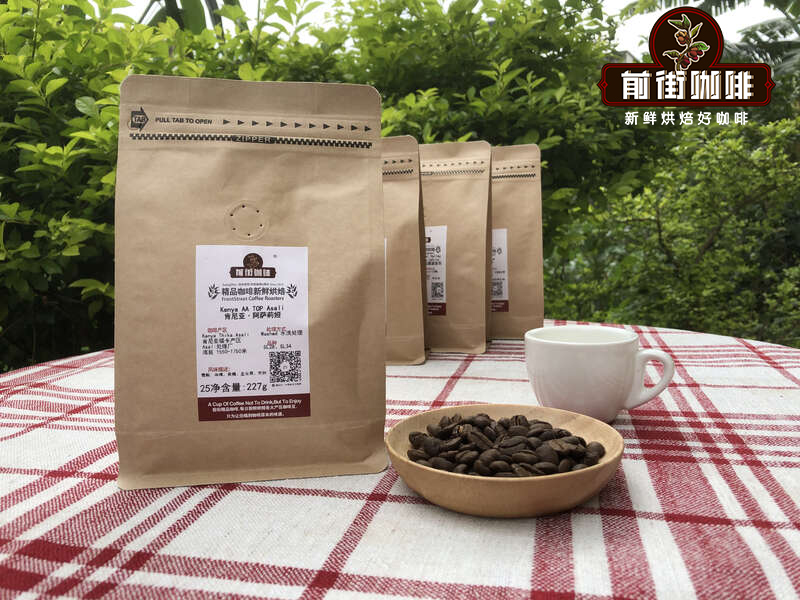
Front Street Coffee Kenya Azaria Coffee beans AA TOP Grade
Kenyan auction system
Qianjie Coffee mentioned earlier that in the history of colonial rule in Kenya, local farmers did not benefit much from coffee. This is also a dark moment in the history of coffee cultivation in Kenya. In 1931, in order to enable farmers to win better prices and incomes and no longer be subject to distant excessive traders, the government set up the Kenyan growers' Cooperation Alliance and the Kenyan National Coffee Council to set up an auction mechanism. The Nairobi Coffee Exchange was established in 1937, when the auction trading system became more popular and widely supported.
Most of the coffee beans are graded and then sold at the auction site by the Kenya Coffee Bureau. The system of public auction can be traced back to 1934, and the auction method adopts the agent system. There are 50 licensed agents in Kenya who send sample beans to their customers for cup testing. Customers can bid for their favorite coffee by agents at auction. But this approach seems to encourage intermediaries to erode farmers' incomes, so in 2006 Kenya opened 32 more independent sales agents to approach foreign coffee buyers directly without going through auctions. However, all these must meet the standards such as the guarantee of the quality storage bank by the Kenyan Coffee Agency. The two systems operate in parallel. After several years of development, the most transparent auction distribution system is. The better the quality of coffee, the better the price can be measured through the cup. More cooperatives and farms are willing to join. Qianjie Coffee also pays close attention to the coffee auction market, which can not only understand the changes in the local coffee market, but also benefit not only farmers but also buyers from all over the world.
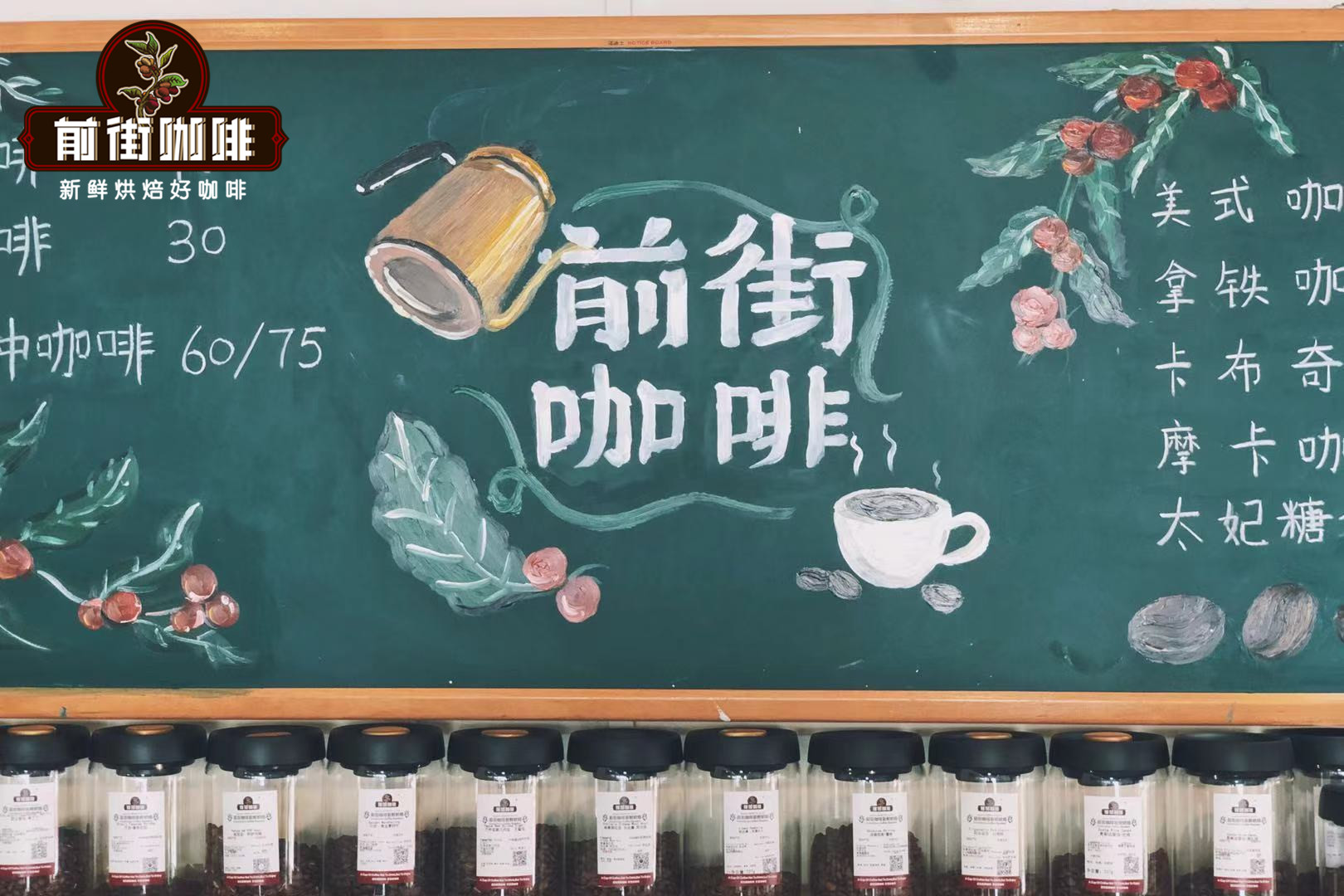
Two main trading modes of coffee beans in Kenya
① Nairobi Coffee Exchange auction (central auction system), 85% of coffee beans are traded through the auction system
Since the establishment of the auction system in the 1930s, most Kenyan coffee has been traded in this way. Coffee auctions are held every Tuesday during the harvest season. It is an auction system developed from a "public outcry" auction system, in which each trader bids by pressing an electric trigger. Through this system, the price of high-quality, highly popular coffee will soar as agents compete with each other.
② direct trade (often referred to as the "second window"), only 15% of coffee beans are traded through direct trade.
After 2006, the Kenyan government allowed farmers to trade directly with foreign buyers (such as bakers or importers) and to discuss and determine a price different from that of auctions before or during harvest. Some exporters also buy coffee directly from relevant marketing agents or factories, using the previous week's specific grade auction price as a negotiated reference price. Direct trade can lead to more income for farmers who produce high-quality coffee. When direct trade is not feasible, go back to the exchange and sell it by auction.

What are the Kenyan coffee beans in front of the street?
After several rounds of tasting, Qianjie coffee has been screened out from more than a dozen different producing areas, and only two or three coffee beans will eventually be put on the shelves. It is not that the rest of the coffee beans are not good. The original intention of Qianjie coffee is not to sell, but in this process, the purpose of Qianjie coffee is to understand each coffee producing area, different coffee varieties in the same producing area, and different treatments of the same coffee variety. And set up the corresponding database, as well as the comparison between different coffee producing areas, Qianjie Coffee hopes to let more coffee lovers know about the world of coffee.
Kenya Azaria coffee beans
Producing area: Sika Thika, Kenya
Processing plant: Asali honey processing plant
Altitude: 1550-1750 m
Rating: AA TOP
Variety: SL28,SL34
Treatment: 72-hour washing in Kenya
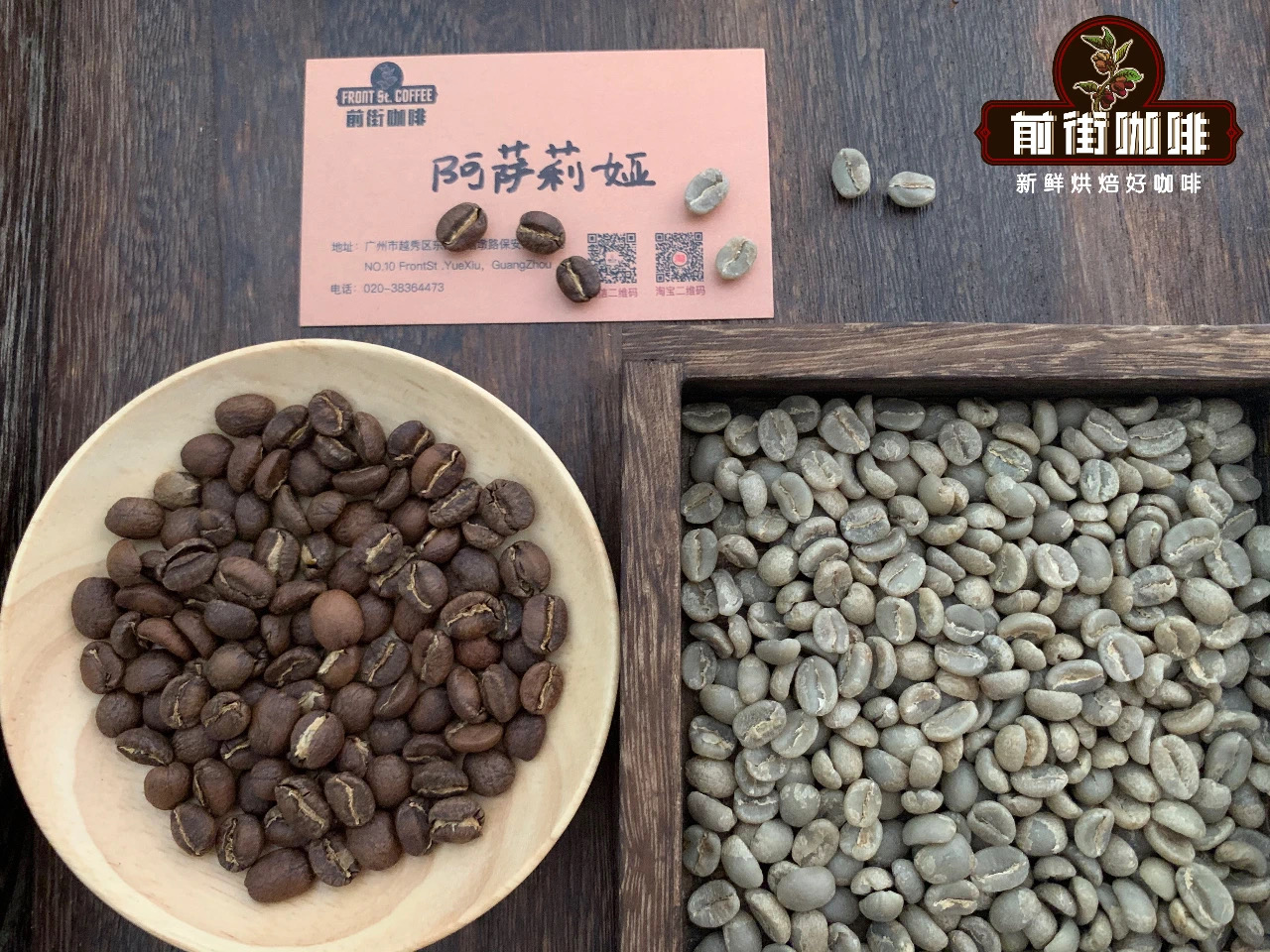
[baking suggestion]
Qianjie beans are full and round, and in order to fully show their bright and mellow acidity, Qianjie uses a light baking degree.
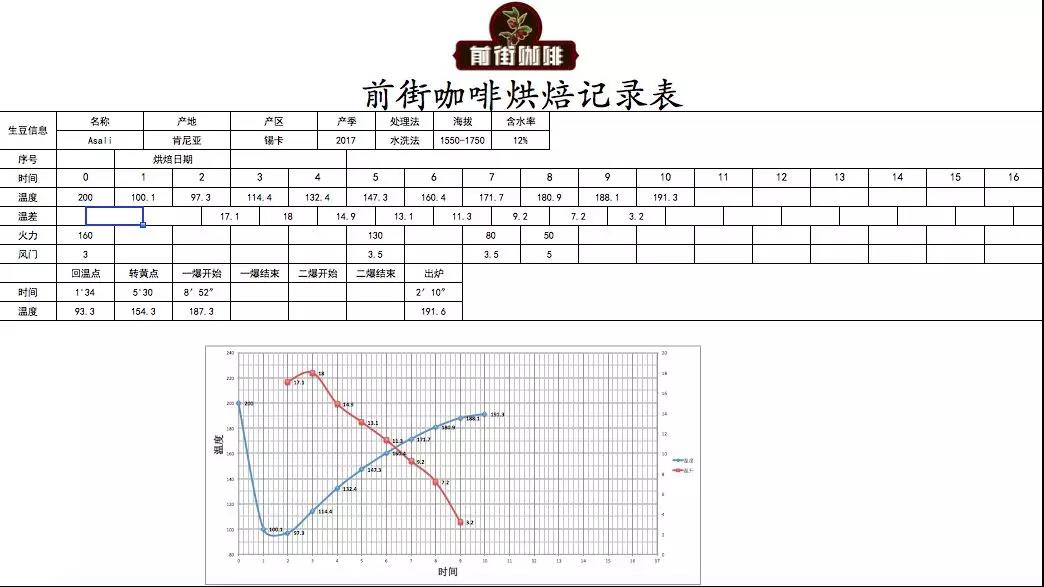
[cup test flavor]
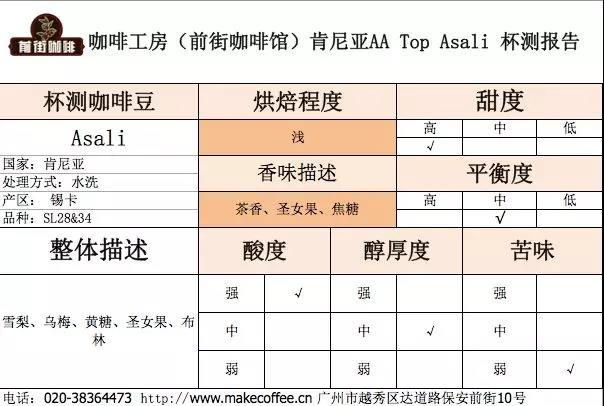
[Qianjieshou Chong suggestion]
The cooking parameters used in the front street are: V60 filter cup, water temperature 90 ℃, powder quantity 15 g, powder / water ratio 1:15, grinding degree BG#5D (Chinese standard No. 20 sieve pass rate 80%)
Here, Qianjie coffee should be mentioned, why should it be screened before determining the degree of grinding? in fact, this is the grinding advice provided by the American Fine Coffee Association SCA for hand-brewed coffee. Qianjie coffee has been widely verified and brewed with different degrees of grinding, and there is a significant gap in the finished products, and the degree of grinding of each type of coffee beans will be different, which is the meaning of sifting. If you don't have a sieve at home, Qianjie Coffee suggests observing the speed of the water to judge that if the flow is too fast, it is coarse, and if the flow is too slow, it is fine.
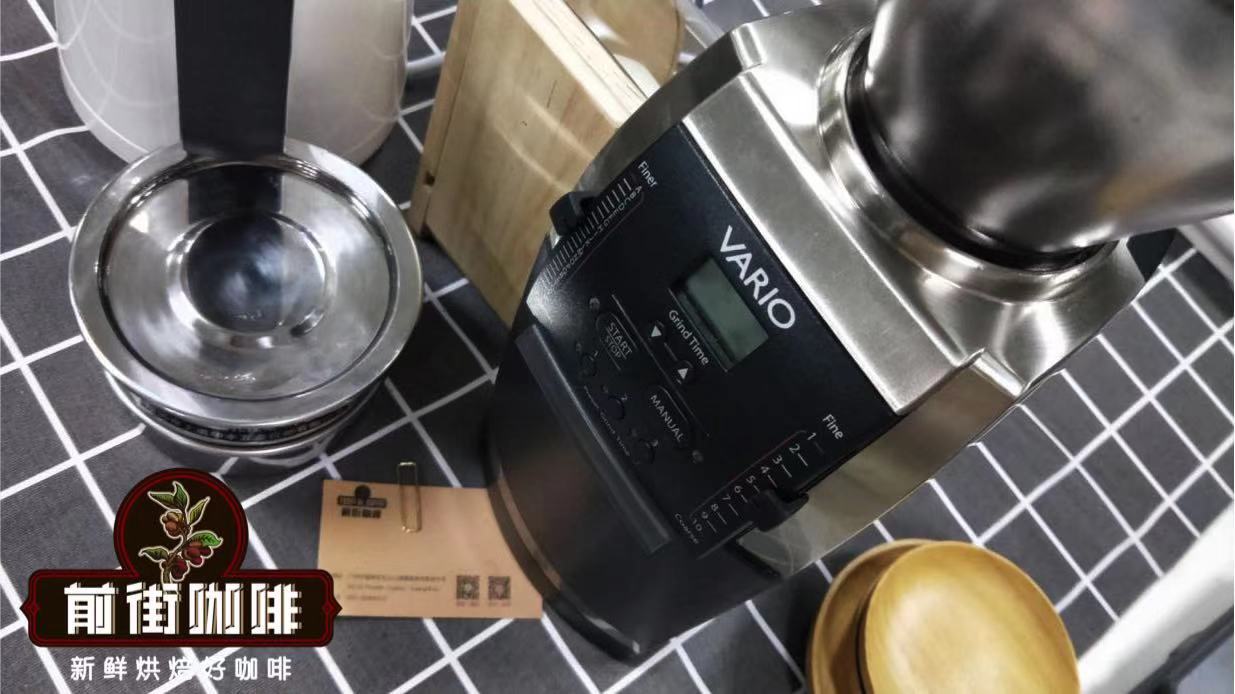
Qianjie coffee is extracted by stages, steamed with 30 grams of water for 30 seconds, small water is injected around the circle to 125 grams, the water level is about to be exposed when the powder bed is about to be exposed, and the filter cup is removed when the water level is about to be exposed to the powder bed. (the time of steaming starts) the extraction time is 2 minutes 39 seconds.
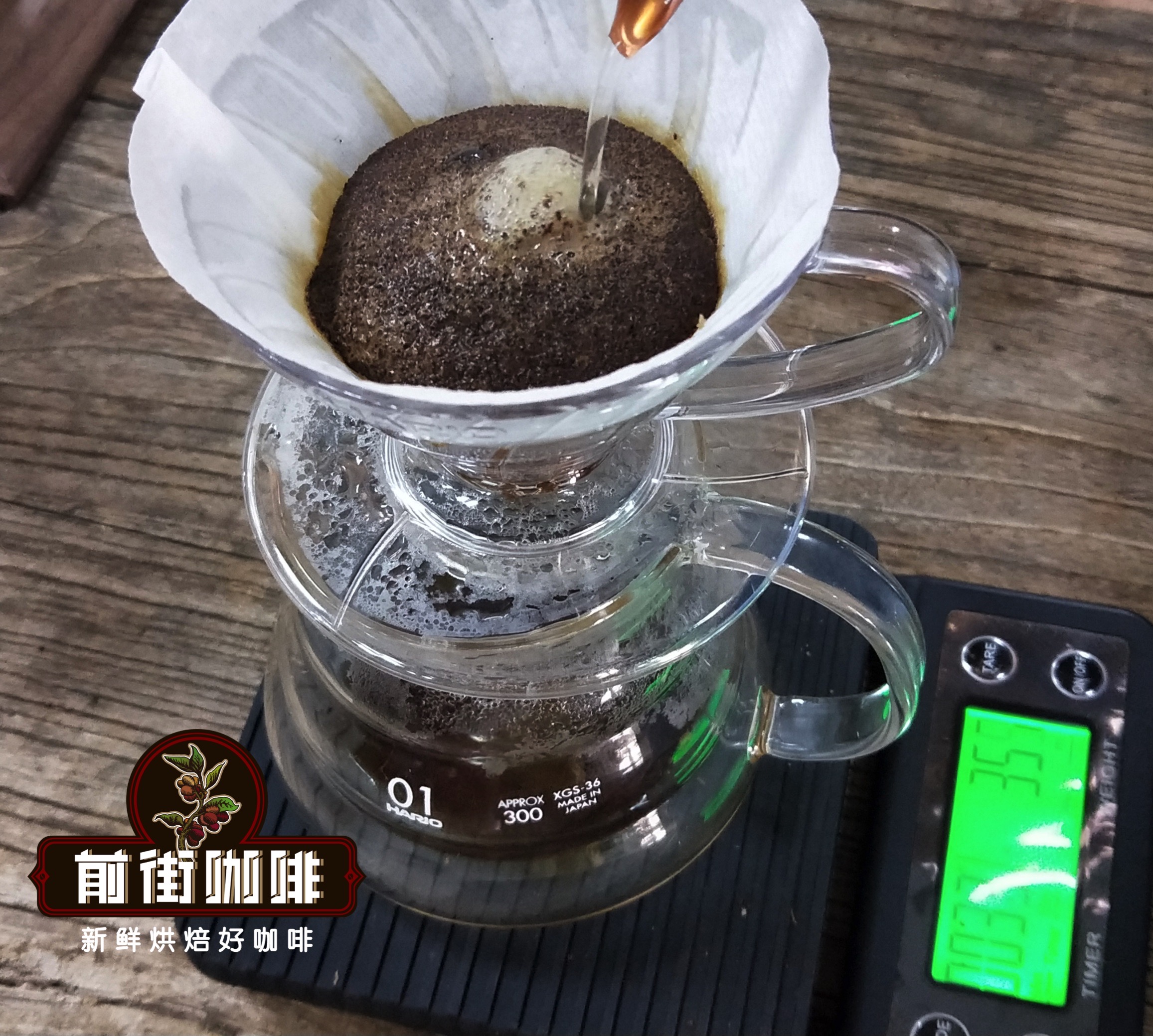
[front street Kenya Azaria coffee bean flavor]
Wet aroma with ripe tomato and flower aromas, imported virgin fruit and black plum flavor, bright acidity, clean and rich palate, outstanding sweetness in the middle, juicy, sweet raspberry and yellow sugar on the finish, and green tea aroma.
PB, Sassini Manor, Kenya
Producing area: Ji'anbu producing area
Manor: Sassini Manor
Altitude: 1680 m
Grade: PB
Varieties: SL28, SL34 & Ruiru
Treatment method: washing treatment
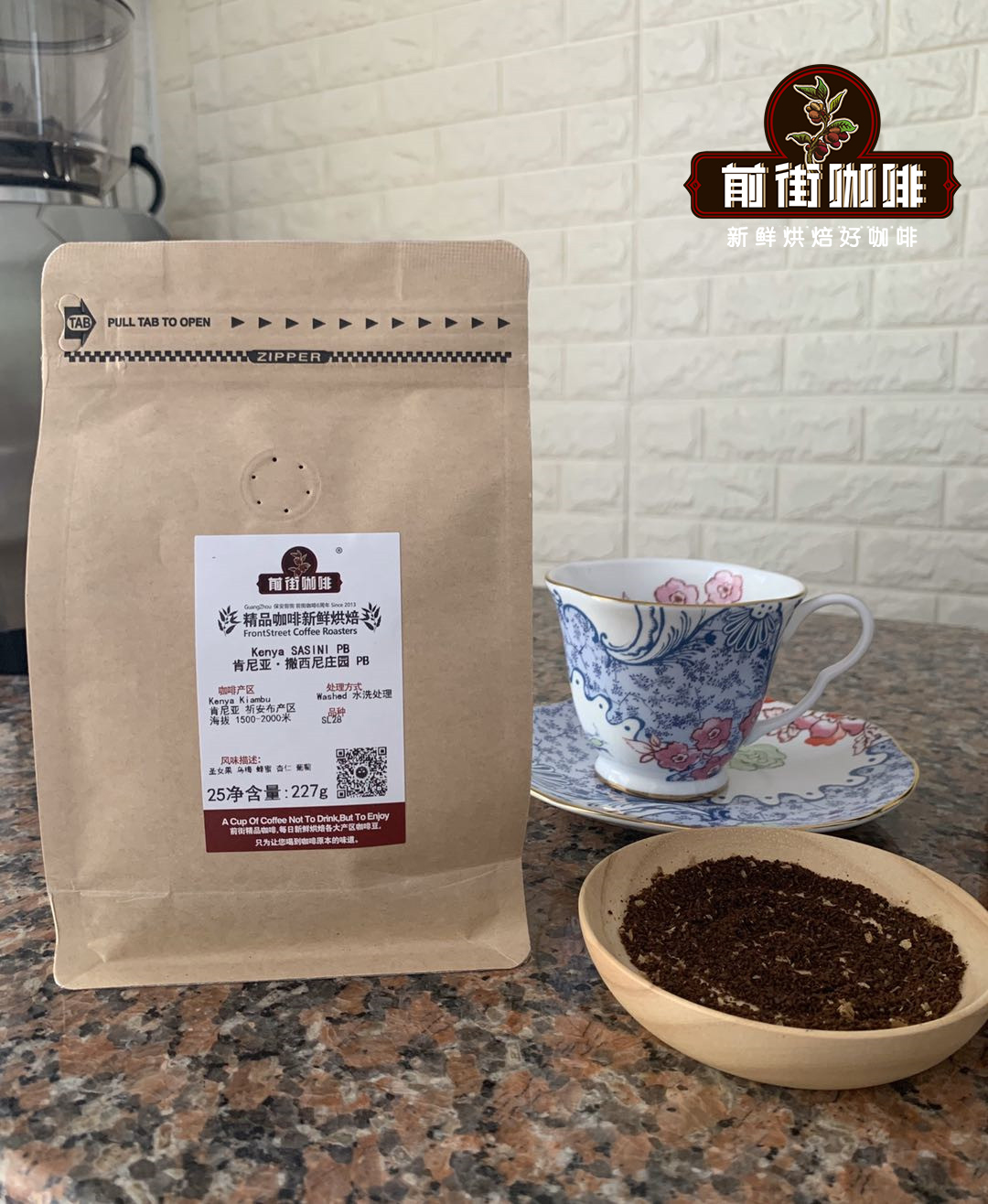
[baking suggestion]
Qianjie coffee uses shallow roasting. In fact, the overall flavor of Kenyan coffee beans, as mentioned earlier, is mainly bright and sour. In order to highlight this point, Qianjie coffee is suggested to make a slight adjustment in the direction of shallow roasting.
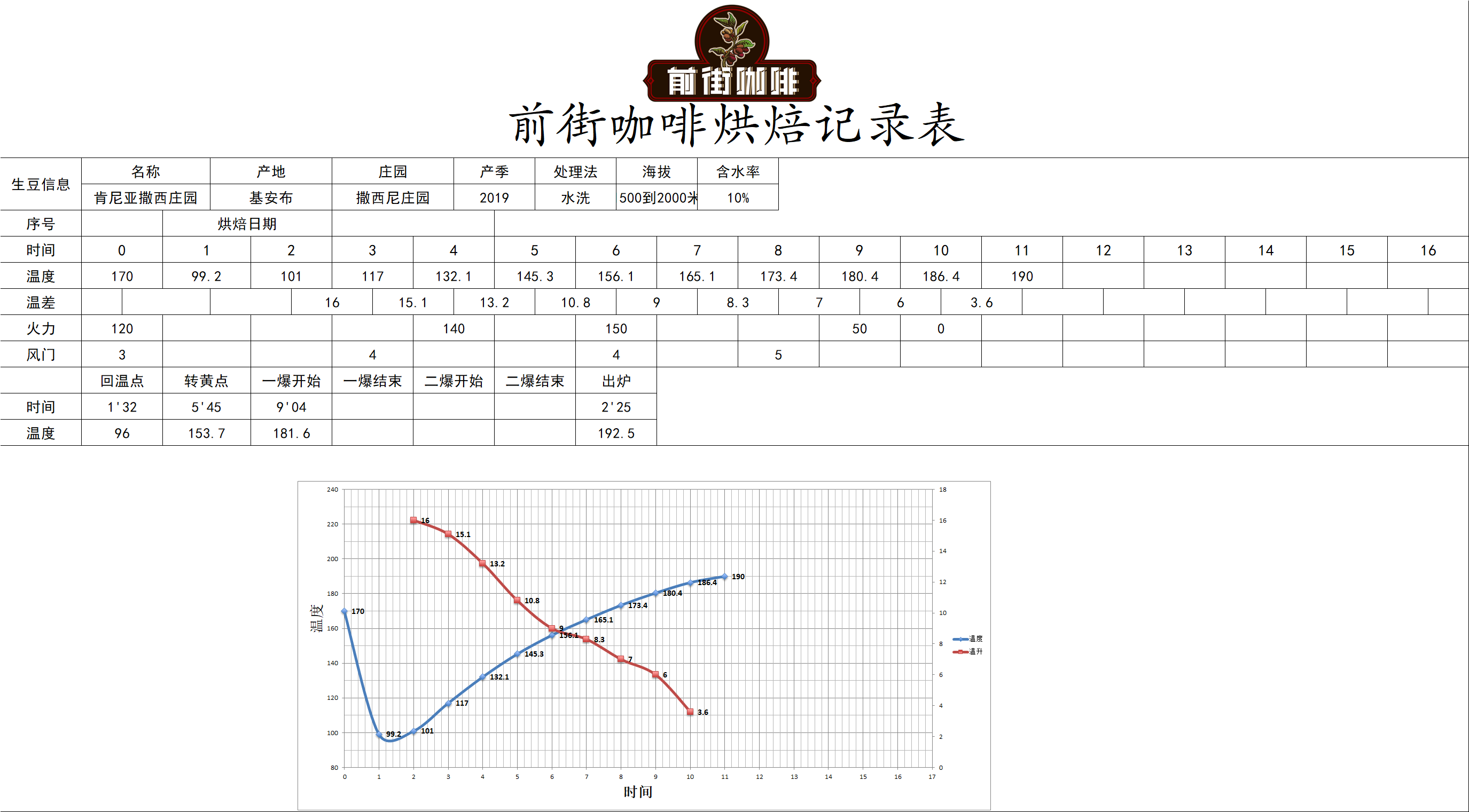
[cup test flavor]
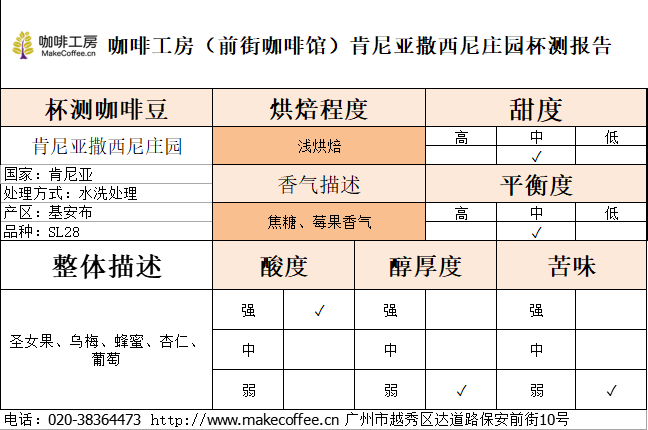
[Qianjieshou Chong suggestion]
The cooking parameters used in the front street are: V60 filter cup, water temperature 90 ℃, powder quantity 15 g, powder / water ratio 1:15, grinding degree BG#5I (Chinese standard No. 20 sieve pass rate 80%)
Perhaps sharp-eyed readers will see that the parameters of Qianjie Coffee Grinding this Kenyan coffee bean are different from the other beans in front, and the degree of grinding of each coffee bean will be different, because of the variety, altitude, treatment, roasting and other factors. so Qianjie Coffee will sift through it to determine the appropriate hand grinding when it gets a roasted new bean.
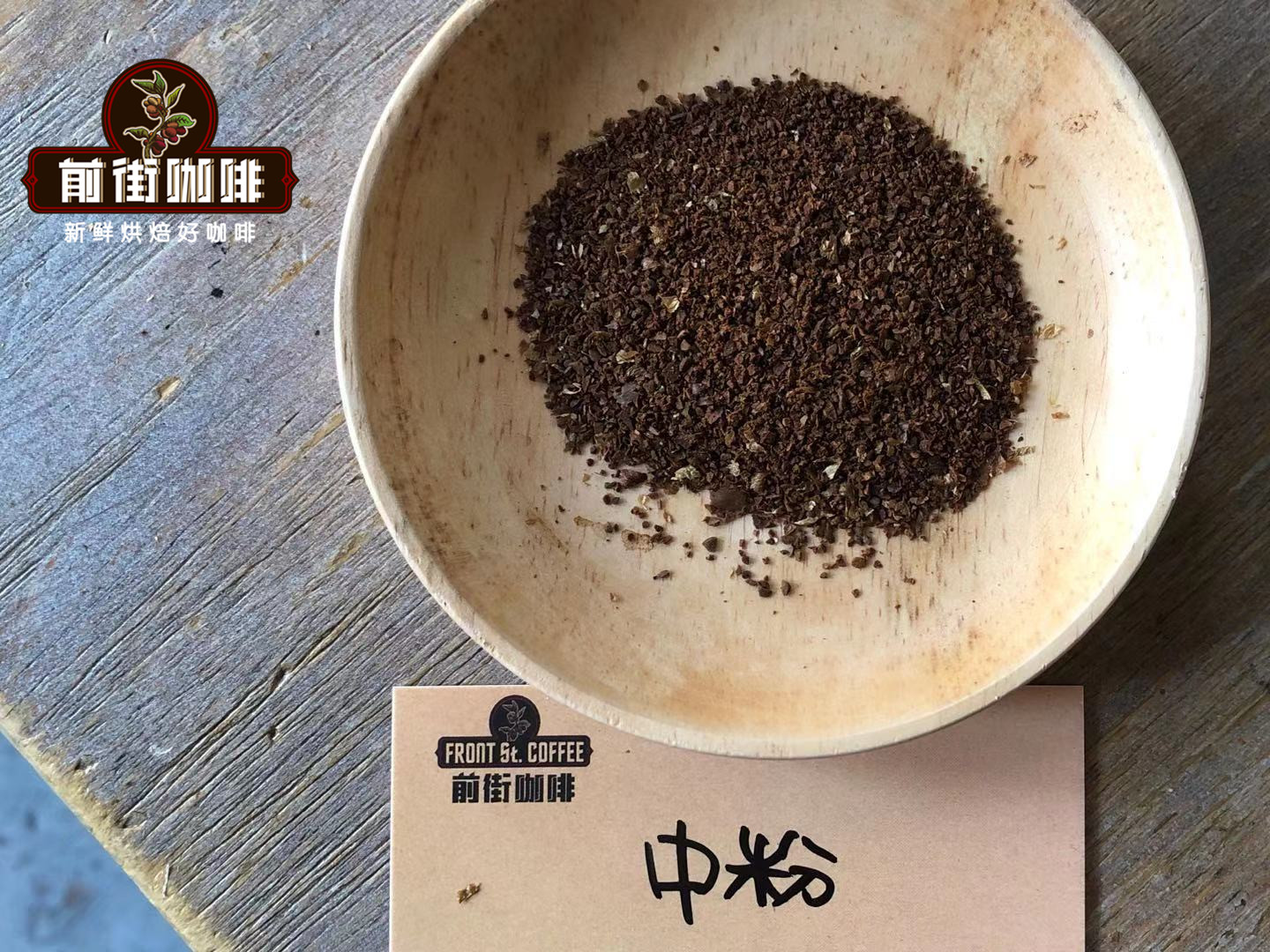
Qianjie uses staged extraction, steaming with 30 grams of water for 30 seconds, small flow injecting water around the circle to 125 grams for segments, water level dropping to 225 grams when the powder bed is about to be exposed, filter cup removed when the water level is about to expose the powder bed, (steaming starting time) extraction time is 2 minutes 39 percent 00 ".
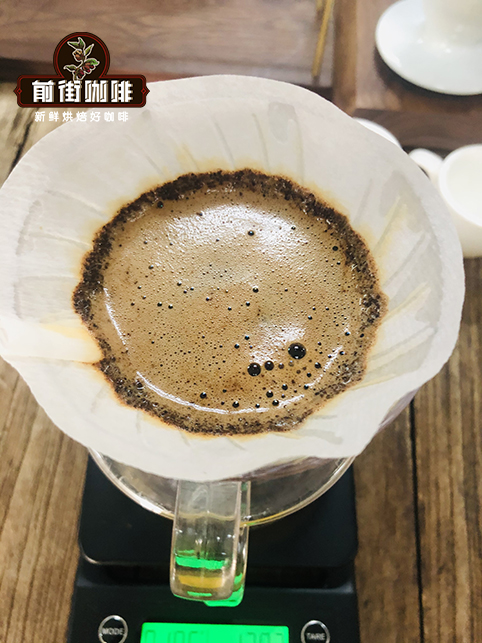
[front street Kenyan Sassini coffee bean flavor]
Obvious black plum and virgin fruit, almonds in the middle and honey at the end, juice-like taste and bright acidity. The difference between Kenya AA and Kenya PB in front street
In fact, it can be seen that there are obvious differences in the classification of the two beans in Qianjie, and the baking parameters and cooking parameters used in Qianjie are also different. under these conditions, they can also feel different places in the presentation of flavor.
The similarities between the two are obvious black plum, virgin fruit, honey flavor, with the temperature down with a slight nutty flavor, juice-like taste, sour bright. But the acidity of AA is brighter than that of PB, and the overall layering is higher, while PB highlights the sweetness of berries and honey, clean and soft as a whole.
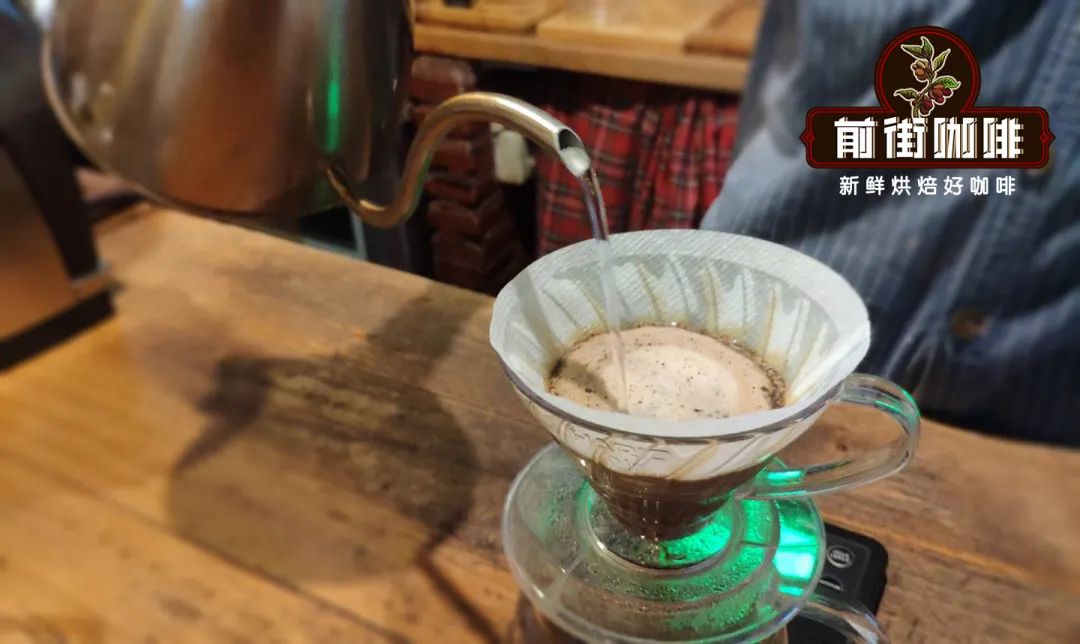
For more boutique coffee beans, please add private Qianjie coffee on Wechat. WeChat account: kaixinguoguo0925
Important Notice :
前街咖啡 FrontStreet Coffee has moved to new addredd:
FrontStreet Coffee Address: 315,Donghua East Road,GuangZhou
Tel:020 38364473
- Prev

Introduction of coffee bean producing areas in Kenya the flavor and taste characteristics of Kenyan coffee in Africa are recommended.
Following Kaibei (official Wechat account vdailycom) found that Kenyan coffee, which is mostly grown at an altitude of 1500Murray 2100m above sea level, is harvested twice a year. To ensure that only ripe berries are picked, people must tour the forest and go back and forth about
- Next
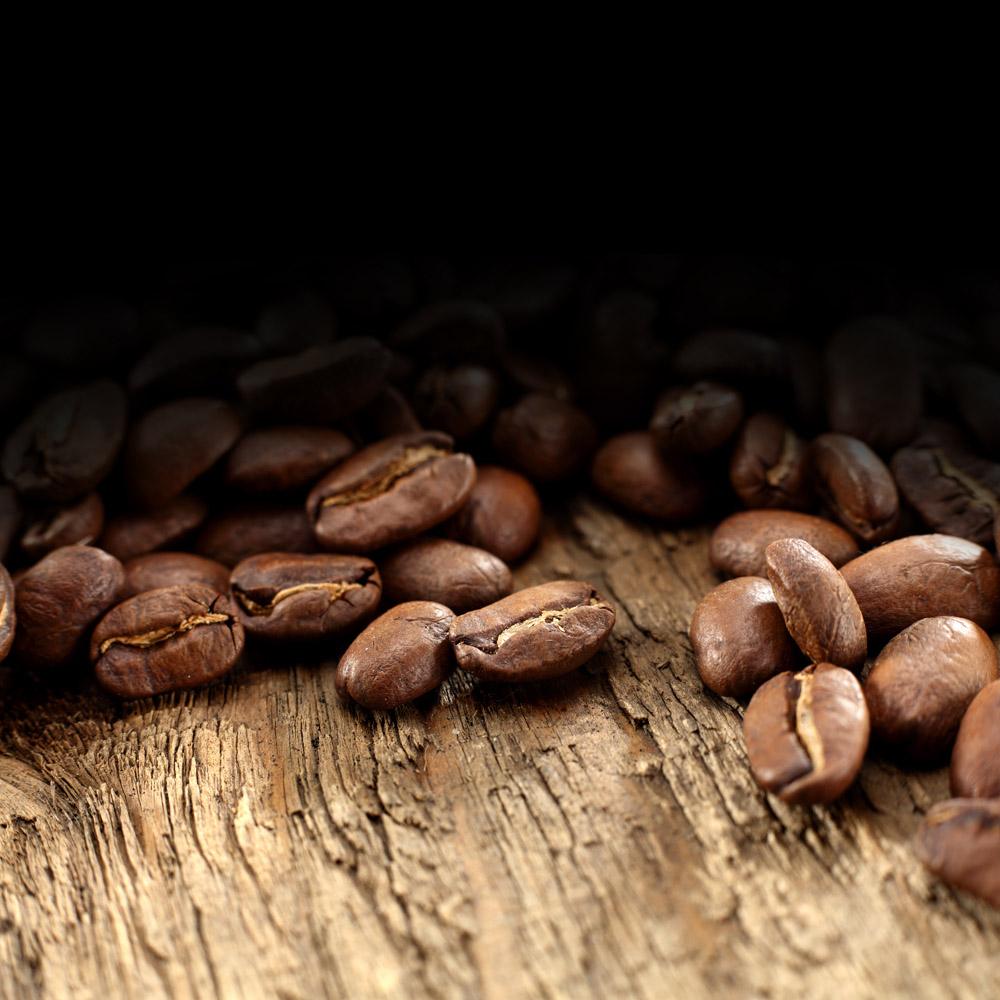
Kenyan coffee bean producing area, Kenyan coffee bean characteristics
Following Kaipai (Wechat official account vdailycom) found that Beautiful Cafe opened a small shop of its own NYERI (Nieli) NYERI, a coffee bean-producing region in Kenya: Nyeri in central Kenya is home to the extinct volcano Mount Kenya. The red soil in this area breeds the best coffee in Kenya. Agriculture is extremely important here; coffee is the most important crop. Group by small farmers
Related
- Detailed explanation of Jadeite planting Land in Panamanian Jadeite Manor introduction to the grading system of Jadeite competitive bidding, Red bid, Green bid and Rose Summer
- Story of Coffee planting in Brenka region of Costa Rica Stonehenge Manor anaerobic heavy honey treatment of flavor mouth
- What's on the barrel of Blue Mountain Coffee beans?
- Can American coffee also pull flowers? How to use hot American style to pull out a good-looking pattern?
- Can you make a cold extract with coffee beans? What is the right proportion for cold-extracted coffee formula?
- Indonesian PWN Gold Mandrine Coffee Origin Features Flavor How to Chong? Mandolin coffee is American.
- A brief introduction to the flavor characteristics of Brazilian yellow bourbon coffee beans
- What is the effect of different water quality on the flavor of cold-extracted coffee? What kind of water is best for brewing coffee?
- Why do you think of Rose Summer whenever you mention Panamanian coffee?
- Introduction to the characteristics of authentic blue mountain coffee bean producing areas? What is the CIB Coffee Authority in Jamaica?

